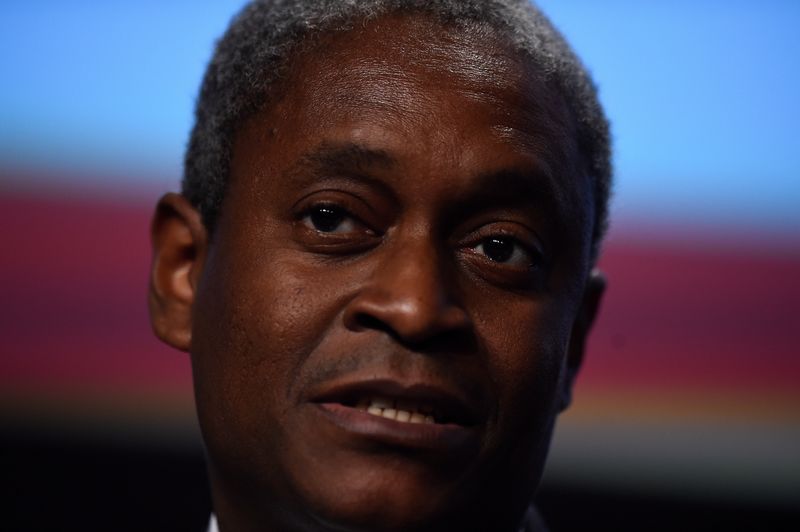By Ann Saphir
(Reuters) -As the Federal Reserve amps up its fight against 40-year-high inflation with what is expected to be a string of big interest-rate increases, one U.S. central banker injected a note of caution, warning headlong rate hikes could create "significant economic dislocation."
In an essay published Tuesday, Atlanta Fed President Raphael Bostic said he supports an expeditious return of monetary policy to a more "neutral" stance to bring down inflation that is currently running at more than three times the Fed's 2% target.
In doing so, he said, "I plan to proceed with intention and without recklessness."
Monetary policymakers, he wrote, must be "mindful" of the uncertain effects of the pandemic, the war in Ukraine and supply constraints on the economic outlook, and "proceed carefully in tightening policy."
The Fed earlier this month raised its target for the overnight bank-to-bank lending rate by half a percentage point, to a range of 0.75%-1%, and Fed Chair Jerome Powell said most policymakers back two more such rate hikes in June and July.
Bostic's remarks underscore a key point of tension as Fed policymakers contemplate their next moves as they battle U.S. price pressures amid rising risks of a global recession and a range of unknowns, including how workers and households will behave in an economy perhaps permanently changed by the pandemic.
Bostic on Monday said he'd like to pause further rate hikes at the Fed's September meeting to allow time to assess the impact of tighter policy on the economy and inflation. [nL2N2XF1VO]
Wednesday's publication of minutes from the Fed's May meeting could show how widely held that view is, and what other options are under consideration.
Since the May meeting, several Fed policymakers have said they would like to reduce the pace of rate hikes after an initial burst of tightening, as long as inflation shows signs of cooling.
Among those, Cleveland Fed President Loretta Mester has said she would favor more aggressive steps at that point if inflation is not cooperating.
At least one policymaker, St. Louis Fed President James Bullard, wants to get the interest rate to 3.5% by year end, which would require half-point rate hikes at all five remaining Fed meeting this year.
Evercore ISI's Krishna Guha says the best guide to likely Fed policy is Powell himself, who earlier this month said he'd want to keep "pushing" on rate hikes until he sees a "clear and convincing" drop in inflation.
"That high outcome-based standard is unlikely to be met in September, absent a very sharp deterioration in the economy, though there may well be enough progress to allow the Fed to step down from 50bp to 25bp hikes at that meeting," wrote Guha, a former communications chief at the New York Fed.
The housing market may already be providing a signal. Commerce Department data on Tuesday showed sales of new U.S. single-family homes tumbled to a two-year low in April, as higher mortgage rates bit into demand that two years of near-20%-per-year home-price increases had failed to stem.
Though the Fed has only raised rates by a total of 0.75 percentage point since March, policymaker talk of tighter policy since last fall has pushed up home-borrowing rates by about 2 percentage points this year as lenders anticipated Fed action.
Fed policymakers want to see similar cooling in more parts of the economy, even as they hope to avoid the kind of sharp slowdown that could trigger a recession.

Bostic says other changes may also be in train. Labor force participation, which fell during the pandemic, has risen, potentially limiting what might otherwise be inflationary wage gains. Households sitting on trillions of excess savings have started to save less and use credit cards more, possible early signs of curtailed spending ahead.
But in a world where supply contraints dominate, as Kansas City Fed President Esther George noted on Monday, policymakers are unsure how quickly higher borrowing costs will bite on demand. And that's sure to be the debate ahead that informs how high and how far rate hikes ultimately go.